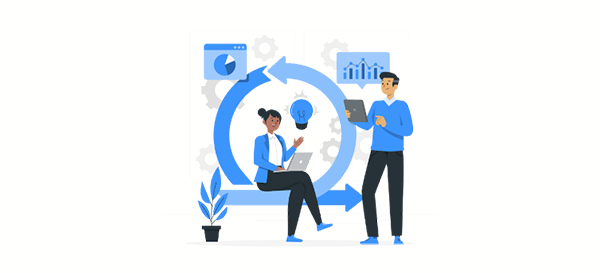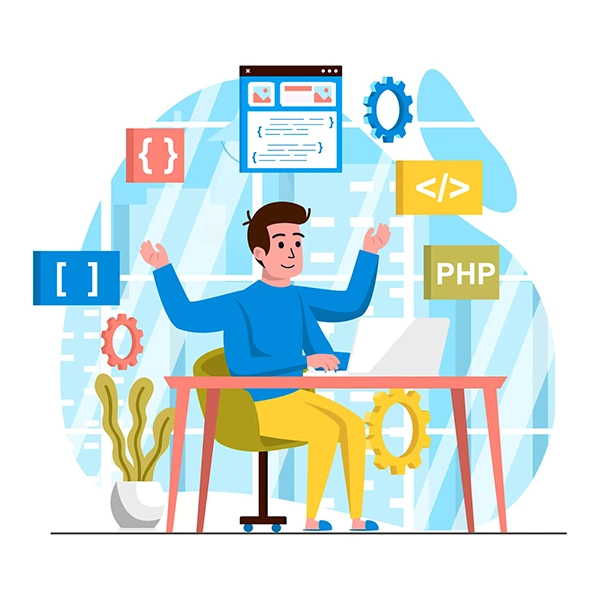As a developer, I pay special attention to security because we all know that hackers and malware are always active, anyone can be their next victim. But what practices and tools do I use? Well, you’re going to find that out.
A research report mentioned, “Software security is an essential requirement for software systems. However, recent investigation indicates that many software development methodologies do not explicitly include methods for incorporating information security.” And this is risky as it weakens your system.
In this write-up, I will tell you how to build a secure development lifecycle, best practices, and tools. So, if you care about your security, pay attention because this is going to be very helpful.
To make this vision a reality, you need more than just good intentions. What’s required for your success is the right strategy and gear. Let’s begin with the fact that DevSecOps can help teams think about vulnerabilities.
Simply put, it assists in integrating security into every stage of development seamlessly. What makes this approach work? Well, it’s all about DevSecOps tools that do so many valuable things, for example, automate vulnerability detection, enhance collaboration, and ensure compliance.
And most importantly, it works without slowing you down. Paired with a robust DevSecOps framework, these tools streamline processes while keeping threats at bay. Curious about DevSecOps tools and how they fit into the bigger picture? Let’s break it all down.

Sipping encryption in your software development lifecycle (might look fine at first, but one misstep and the whole thing comes crashing down. Once again, secure SDLC is the backbone of resilient software.
If a specialist identifies vulnerabilities early, it saves tons of time and money. In other words, you can perceive it as debugging before the bug even exists. This step ensures you’re not patching up leaks after launch, which is a total nightmare for developers and a gift to hackers.
Plus, when risk management is woven into the process, developers feel empowered as they know they’re building something robust. Tools like SAST (Static Application Security Testing) and DAST (Dynamic Application Security Testing) must become your new closest friends.
Thanks to them, you create a code, which isn’t a ticking time bomb as you can spot vulnerabilities while your software is still on the operating table. Also, automating reliability checks in your continuous integration/continuous deployment pipeline gives you peace of mind as no update ships with hidden dangers.
And let’s note that malware doesn’t stop at launch. Continuous monitoring tools provide a real-time defense system, which is so much needed in an era where data breaches make headlines.
Let’s map out the steps for secure coding practices to get you there and make security part of your team’s DNA.

When it comes to SDLC security, you should start with a crystal-clear vision. Don’t avoid answering simple yet important questions like:
If you find time to set these priorities upfront, it will be easier to design an SDLC that aligns with your needs.
As we mentioned in a previous section, each stage of production, from planning to maintenance, should have protections baked in. For example, during planning, you must incorporate threat modeling to identify risks early.
When it comes to growth, use safer coding practices and automate vulnerability scans with tools like SonarQube or Checkmarx. Then, testing requires you to add static and dynamic analysis to catch vulnerabilities in both code and runtime environments.
If we talk about deployment, use container scanning tools. For instance, resort to Aqua or Falco to secure cloud environments. And finally, the last post-deployment stage means that you have to implement real-time monitoring to detect and respond to new attacks.

An internal question is: why rely on humans for tasks machines do better? Today, you can easily automate testing, code reviews, and patch management so that these processes will take minutes, tools like Jenkins or GitLab CI/CD pipelines help you scale security without slowing development.
Safety is a team sport, and every player needs to know the rules. It’s being said because you should pay special attention to regular training. Do your finest to make sure that developers, testers, and ops teams are aligned and up to date with the latest threats.
By the way, you should encourage your team to approach development with an attacker’s mindset. And make prevention successes part of your team’s story. Don’t forget that everyone should feel responsible for security, from the intern to the CTO.
When it comes to tech, you should always keep an eye on numbers. In more detail, track metrics like defect escape rate and mean time to detect (MTTD) vulnerabilities. You can use these insights to refine your processes and stay ahead of attackers.
PRO TIP
There is no such thing as an unbreachable system, you have to stay up to date with all the threats and solutions only then you are considered 90% secured!
As you see from the article, your private software development life cycle is very important for creating a foundation your team can be proud of. If you diligently follow all the SDLC standard practices, integrate a secure software implementation framework, and leverage tried-and-true software development leading policies, you’re building trust.
Look to software crafting examples from industry leaders for inspiration, and remember: a proactive approach to encrypted software production ensures your applications are robust, resilient, and ready for anything. The perfect time to start? Yesterday. The second-best time? Right now.
